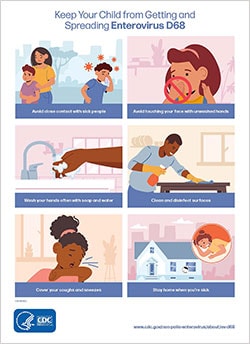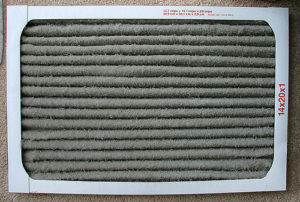 Remember that scene from “Indiana Jones: The Temple of Doom” when Willie Scott has to wade through creepy crawly bugs to save Indiana? Most of us can empathize with Willie’s feelings of disgust, but you may be surprised to learn about a worm that could improve your health. Sounds as far-fetched as an Indiana Jones movie, right? Maybe not…
Remember that scene from “Indiana Jones: The Temple of Doom” when Willie Scott has to wade through creepy crawly bugs to save Indiana? Most of us can empathize with Willie’s feelings of disgust, but you may be surprised to learn about a worm that could improve your health. Sounds as far-fetched as an Indiana Jones movie, right? Maybe not…
Scientists in Australia conducted a clinical trial where they used hookworms to improve symptoms of celiac disease. Researchers infected 12 study participants with hookworm larvae and gave the participants increasing doses of gluten over the course of a year. As the study progressed, study participants were able to eat up to a medium-sized bowl of spaghetti without experiencing negative health effects. Normally, a patient with celiac’s could experience symptoms like diarrhea and vomiting from eating that much gluten.
The worms had a positive effect on study participants because hook worms can reduce the immune response to inflammatory illnesses. These findings are also promising for sufferers of other inflammatory illnesses like asthma and Crohn’s disease.














 Old Man Winter’s arrival means you’re out of the woods for allergy season…only to be greeted by another slew of potential asthma triggers. Winter can also be a tough time for asthmatics because the cold weather forces us indoors where we’re surround by asthma triggers like pets, mold, dust mites and dander. Venturing outdoors can also bring on an asthma attack if the cold air irritates your lungs.
Old Man Winter’s arrival means you’re out of the woods for allergy season…only to be greeted by another slew of potential asthma triggers. Winter can also be a tough time for asthmatics because the cold weather forces us indoors where we’re surround by asthma triggers like pets, mold, dust mites and dander. Venturing outdoors can also bring on an asthma attack if the cold air irritates your lungs.
 Cigarettes used to be marketed as a trendy and cool, but they’re increasingly being replaced by e-cigarettes. The
Cigarettes used to be marketed as a trendy and cool, but they’re increasingly being replaced by e-cigarettes. The  Eating healthy isn’t just good for your waistline, a new study shows that children with asthma can experience reduced symptoms by avoiding certain fatty foods and incorporating omega-3 fish oils to their diet. Asthma is the top reason children miss school, and obese children don’t respond as well to their asthma medicine. Dr. Jason Lang, a Pulmonary Pediatrician at Nemours Children’s Hospital, is conducting the
Eating healthy isn’t just good for your waistline, a new study shows that children with asthma can experience reduced symptoms by avoiding certain fatty foods and incorporating omega-3 fish oils to their diet. Asthma is the top reason children miss school, and obese children don’t respond as well to their asthma medicine. Dr. Jason Lang, a Pulmonary Pediatrician at Nemours Children’s Hospital, is conducting the 
 You’ve probably heard it before—fiber-rich foods are an important part of a balanced diet. There’s a reason the saying goes, “an apple a day keeps the doctor away”—we all want to “stay regular.”
You’ve probably heard it before—fiber-rich foods are an important part of a balanced diet. There’s a reason the saying goes, “an apple a day keeps the doctor away”—we all want to “stay regular.” 

 If your child had a serious skin rash at an early age, and later developed asthma, they’re not alone. In the U.S.,
If your child had a serious skin rash at an early age, and later developed asthma, they’re not alone. In the U.S.,  Sneezing, itchy eyes and nose…these symptoms sound like allergies, but they could be an indicator of
Sneezing, itchy eyes and nose…these symptoms sound like allergies, but they could be an indicator of  Plenty of people suffer from “
Plenty of people suffer from “
 Part I: How to Lessen Asthma Symptoms by Addressing Indoor Air Quality, I explained how improving indoor air quality with the right air filters is key to managing asthma symptoms. In Part II of this series, you’ll learn how to manage indoor humidity levels to prevent mold growth.
Part I: How to Lessen Asthma Symptoms by Addressing Indoor Air Quality, I explained how improving indoor air quality with the right air filters is key to managing asthma symptoms. In Part II of this series, you’ll learn how to manage indoor humidity levels to prevent mold growth. Vacuuming with a HEPA vacuum cleaner, dusting, and regularly changing bedding are all important steps to take care of allergens in your home. Asthma sufferers should also frequently change return air filters in their HVAC system to capture particulates; monitoring humidity levels in the home to manage mold is also beneficial.
Vacuuming with a HEPA vacuum cleaner, dusting, and regularly changing bedding are all important steps to take care of allergens in your home. Asthma sufferers should also frequently change return air filters in their HVAC system to capture particulates; monitoring humidity levels in the home to manage mold is also beneficial. There’s a lot more than stuffing and springs in your mattress, it can also be home to dust mites and other allergens like pet dander and mold. Although dust mites are invisible to the naked eye, these critters can exacerbate asthma symptoms and shouldn’t be ignored. About a quarter of Americans have allergies, and two-thirds of that group have
There’s a lot more than stuffing and springs in your mattress, it can also be home to dust mites and other allergens like pet dander and mold. Although dust mites are invisible to the naked eye, these critters can exacerbate asthma symptoms and shouldn’t be ignored. About a quarter of Americans have allergies, and two-thirds of that group have 











